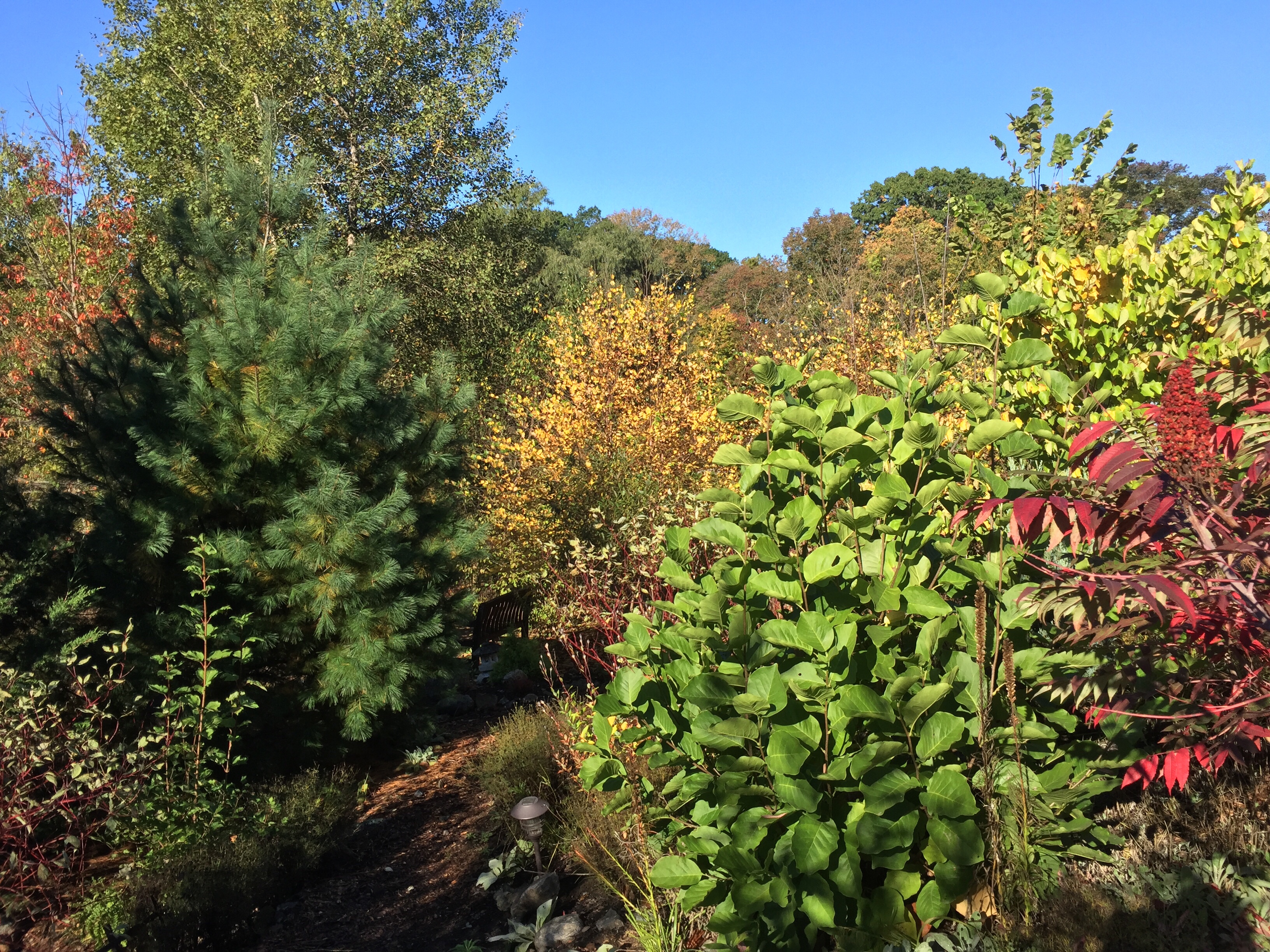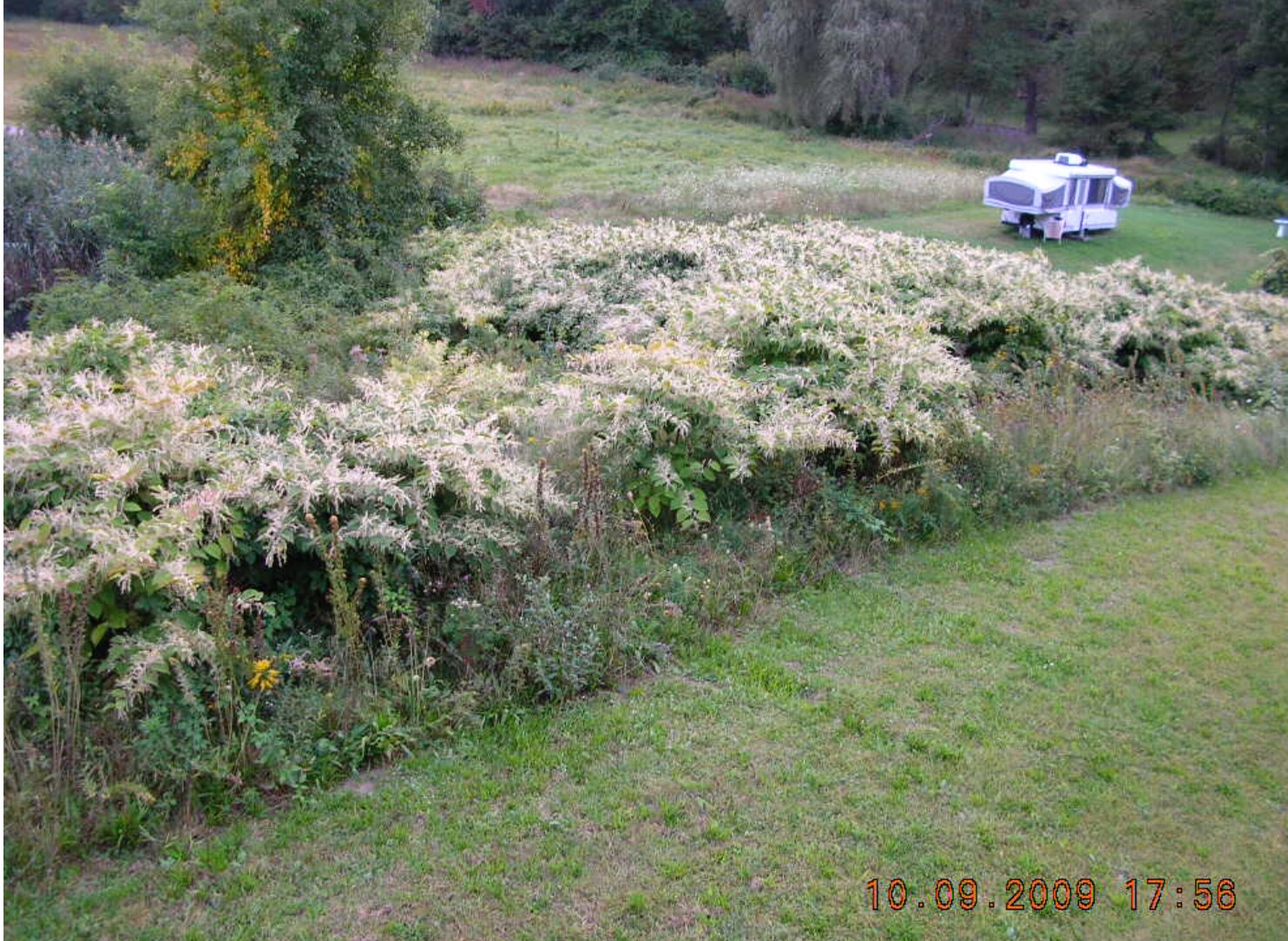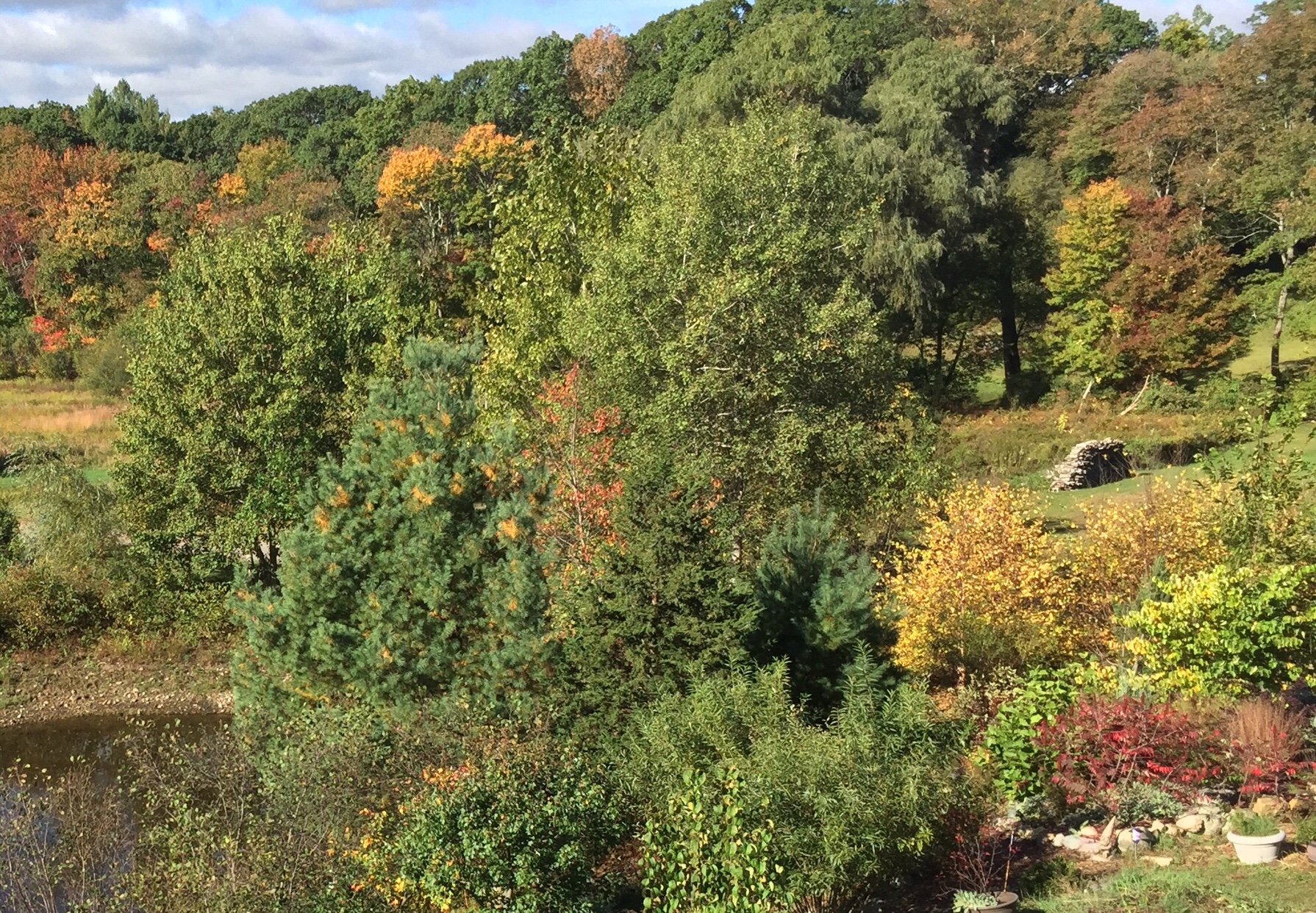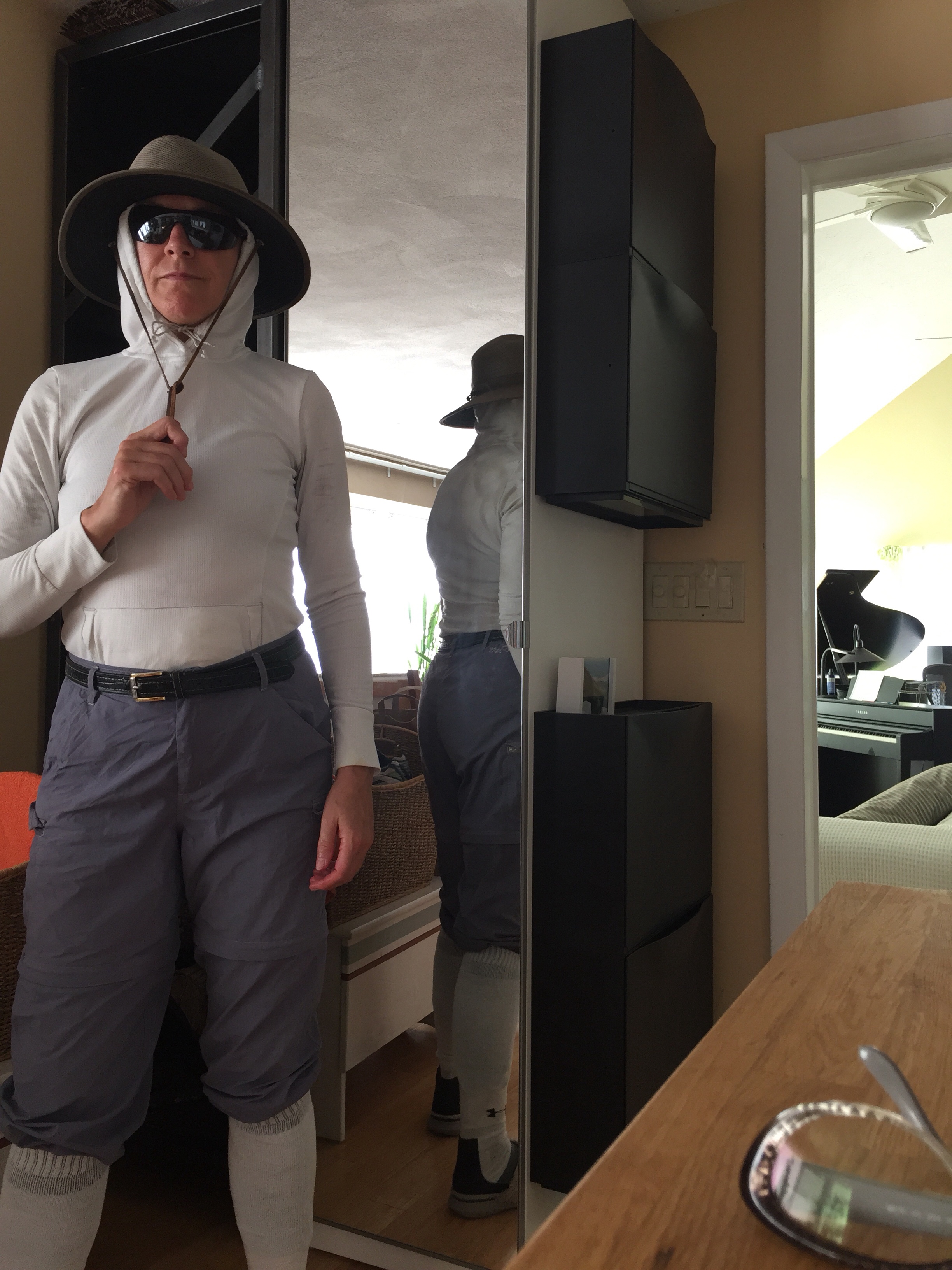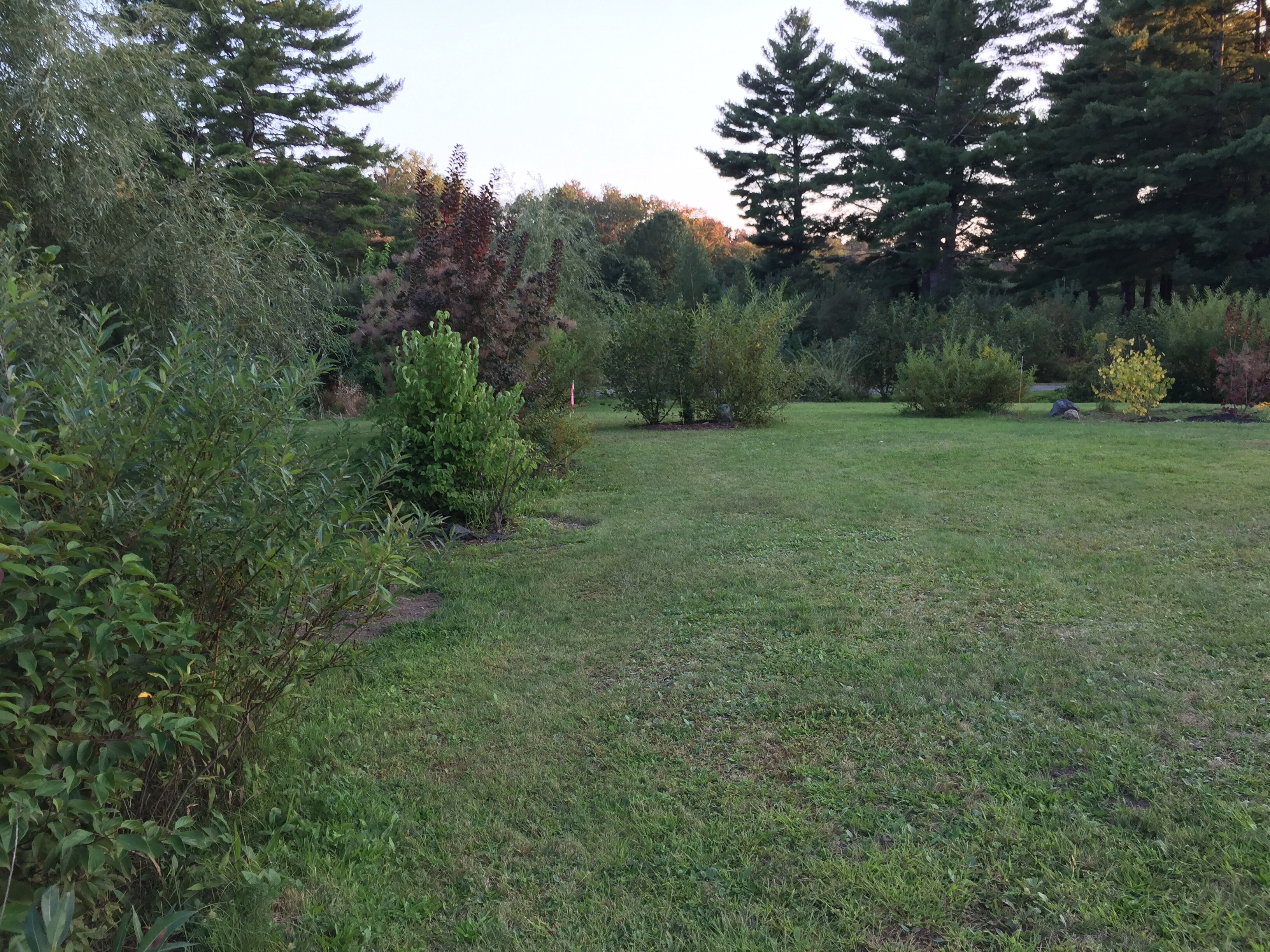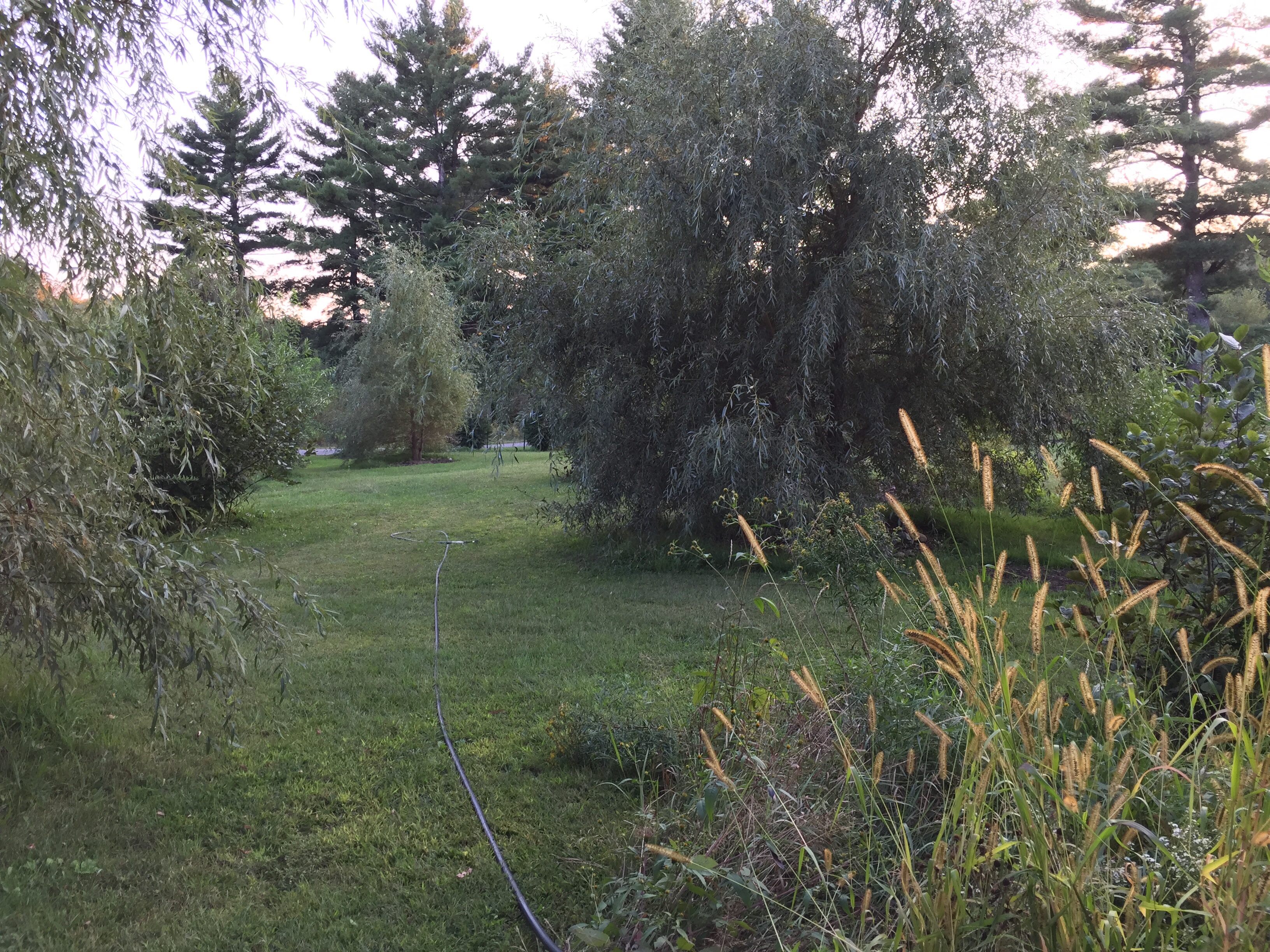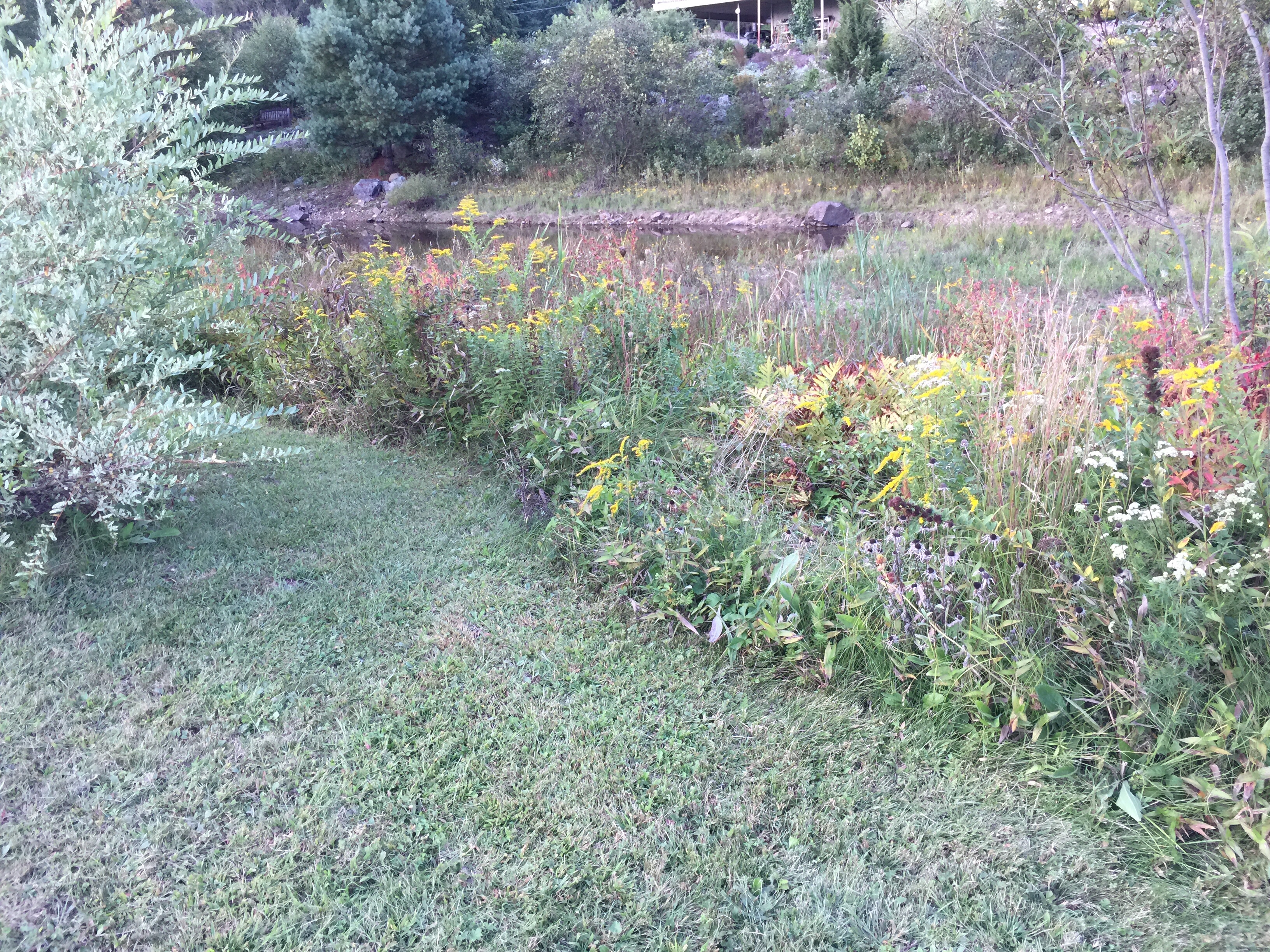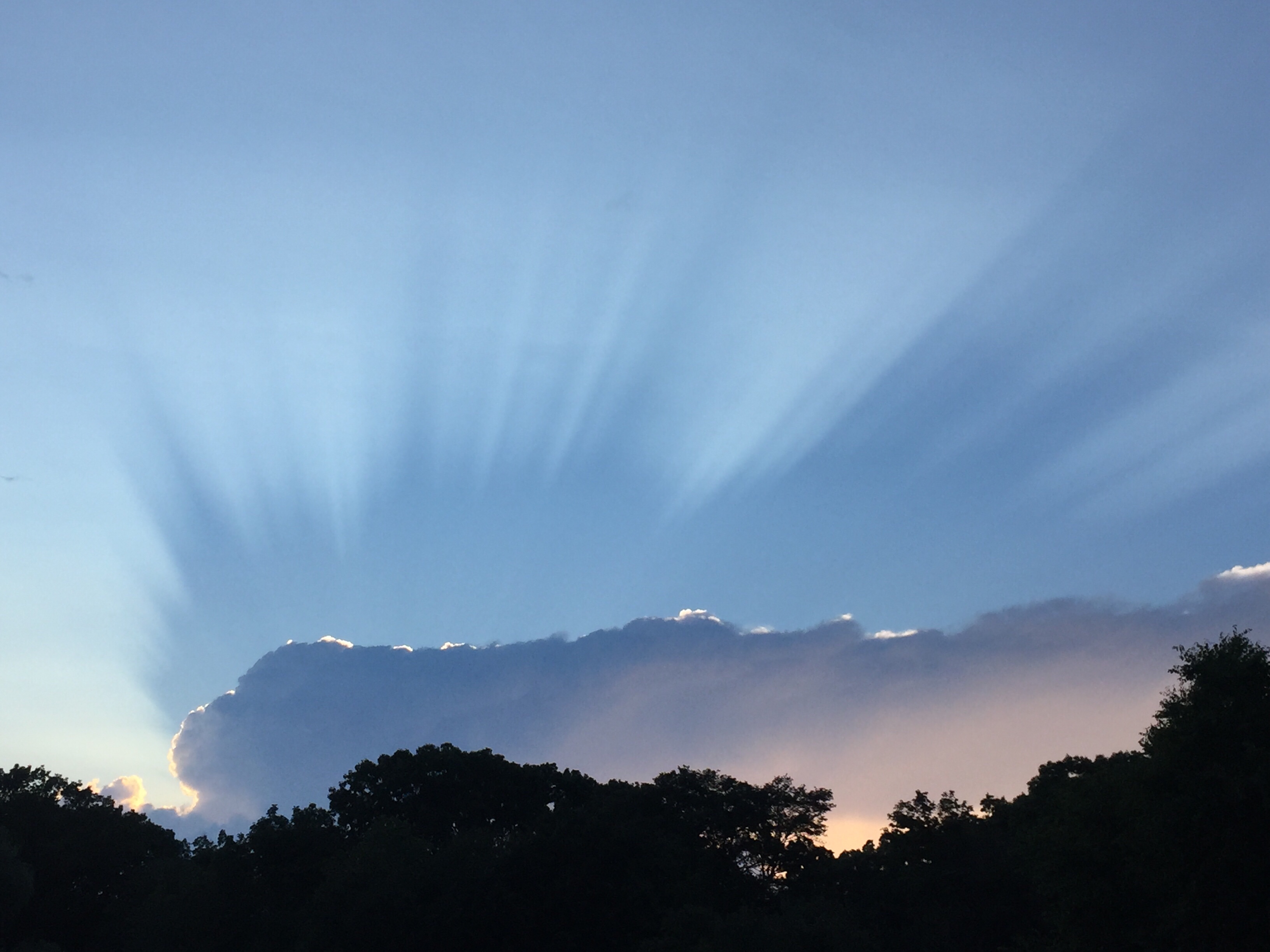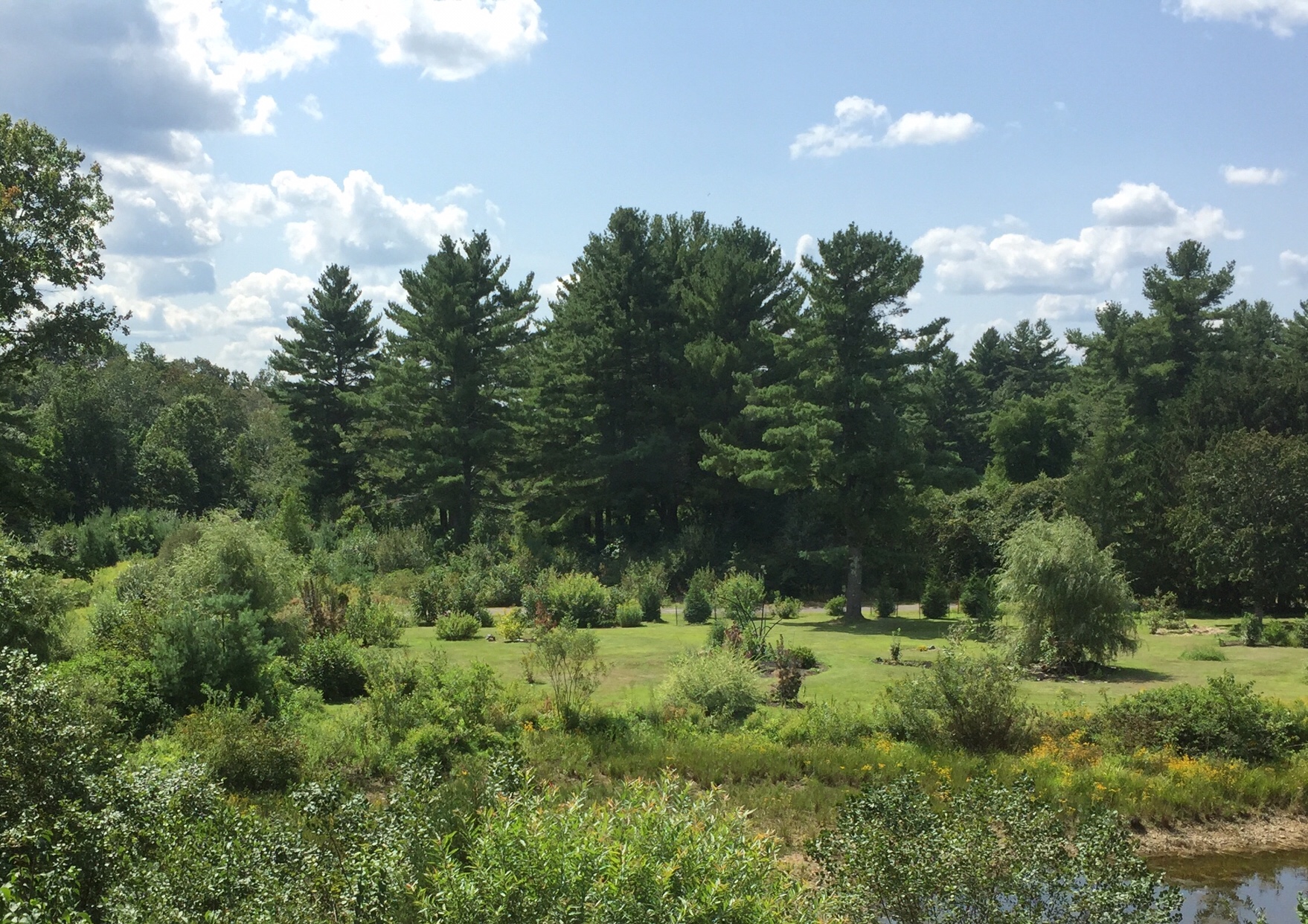On the left, variegated red-twig dogwood backed by white pine, in turn backed by quaking aspen. In center are yellow leaves of river birch. Moving right, a shrubby green magnolia contrasts with the brilliant red leaves of Rhus typhina (staghorn sumac). Above the sumac in the background, branches of a Princeton elm can be seen reaching toward the blue sky.
